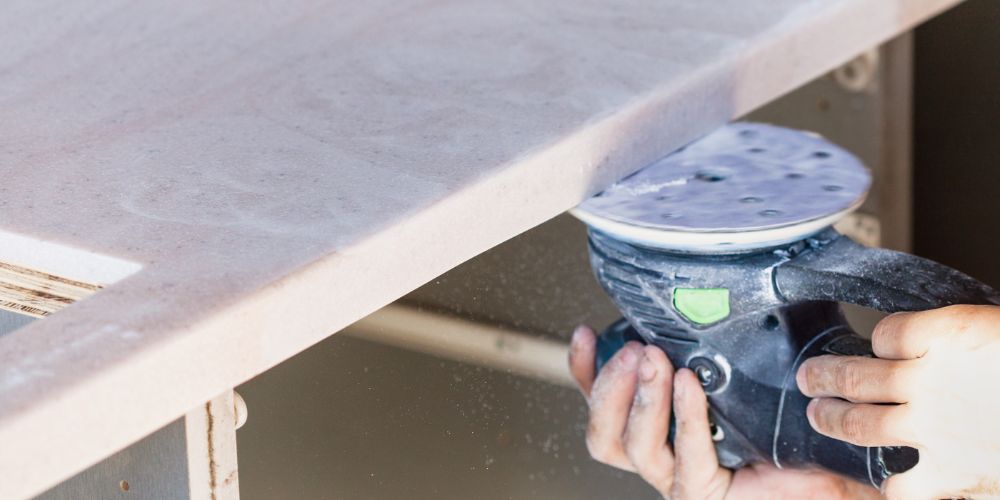
The Health and Safety Executive (HSE) recently issued new advice for installers of stone worktops. This advice is aimed at installers, managers and supervisors, and provides advice on how to protect workers from the risks of risks of silica dust and respirable crystalline silica (RCS).
Although the advice is aimed towards workers who install stonework tops, it is also relevant to other trades that cut materials containing silica.
Control exposure to keep workers safe
Respirable crystalline silica (RCS) is generated during processes such as cutting, chiselling, and polishing stone. Such activities can create significant levels of fine stone dust containing RCS that, when inhaled, can penetrate deep into the lungs. Prolonged exposure to RCS can result in severe lung diseases such as silicosis, chronic obstructive pulmonary disease (COPD), and lung cancer. The impact of these conditions extends beyond those that suffer, but also affects the lives of their loved ones as well. While these diseases are irreversible, they are preventable with the right control measures in place.
What employers need to know
Exposure to RCS falls under the Control of Substances Hazardous to Health Regulations 2002 (COSHH). As an employer, it’s your legal responsibility to implement effective measures that control exposure and safeguard your workers’ health. Not only will this help to protect your workforce, but it can also lead to greater efficiency and reduced waste in your operations.
Achieving effective control typically involves a combination of measures, including local exhaust ventilation (LEV) for dust extraction, properly fitted respiratory protection equipment (RPE), water suppression techniques, and adopting safer processes.
The amount of dust that workers are exposed to is dependent on a wide range of factors, such as:
• The type of stone they are working
• The type of tool they are using (and whether it is either a powered or hand held tool)
• The duration of working with the tool
• Is the worker using the LEV correctly (placing it in the correct position to collect the dust)
• Is the LEV system being maintained and serviced correctly (e.g. thorough examinations, regular cleaning of filters, collection vessels cleaned, etc.)
• How effective the worker’s mask is (respiratory protective equipment)
• How the workshop is organised (including segregation of activities that emit dust as well as housekeeping arrangements).
How THSP can support your business
Health surveillance for silicosis should be considered for workers that are involved in high-risk occupations such as cutting, chiselling and polishing. At THSP, we are committed to helping employers protect their workforce. Our comprehensive support includes expert advice, as well as training for those conducting face-fit tests. Ensuring that your team is well-equipped and informed is vital in safeguarding their health and well-being.
Silica dust is a serious health hazard — but with the right knowledge, you can protect your workforce. Download our free Silica Exposure Toolbox Talk for clear, practical guidance on controlling risks and creating a safer, healthier workplace.
Silica in Stoneworking Toolbox Talk Download